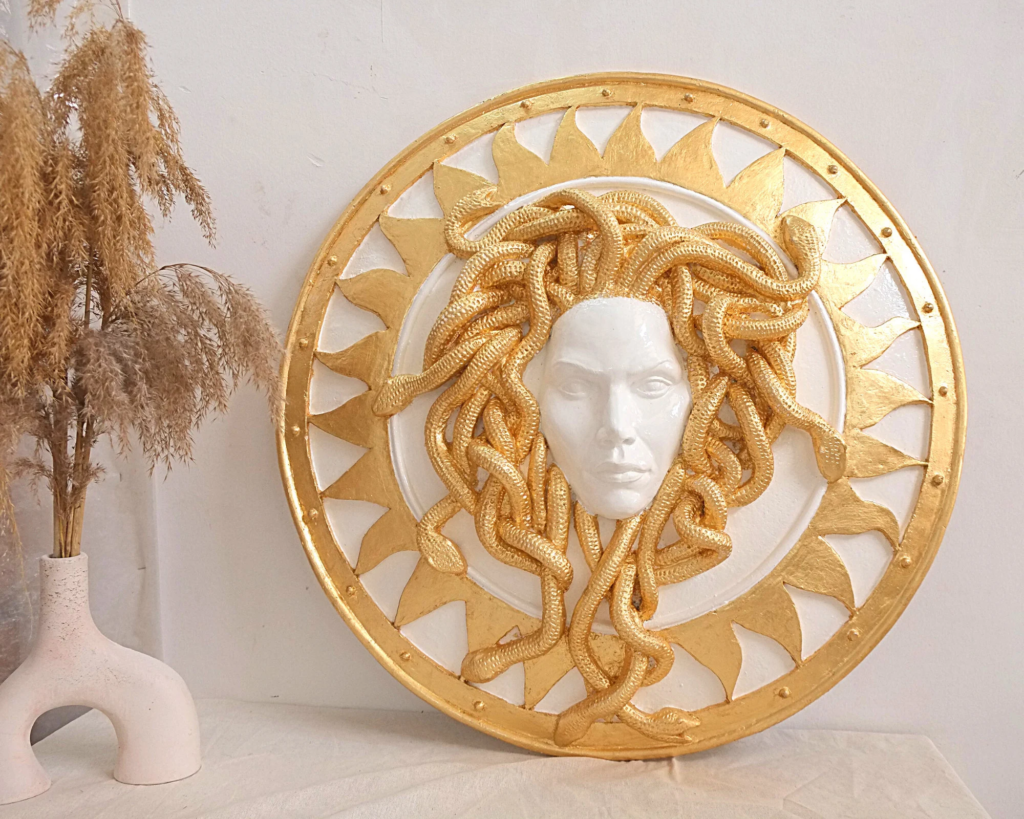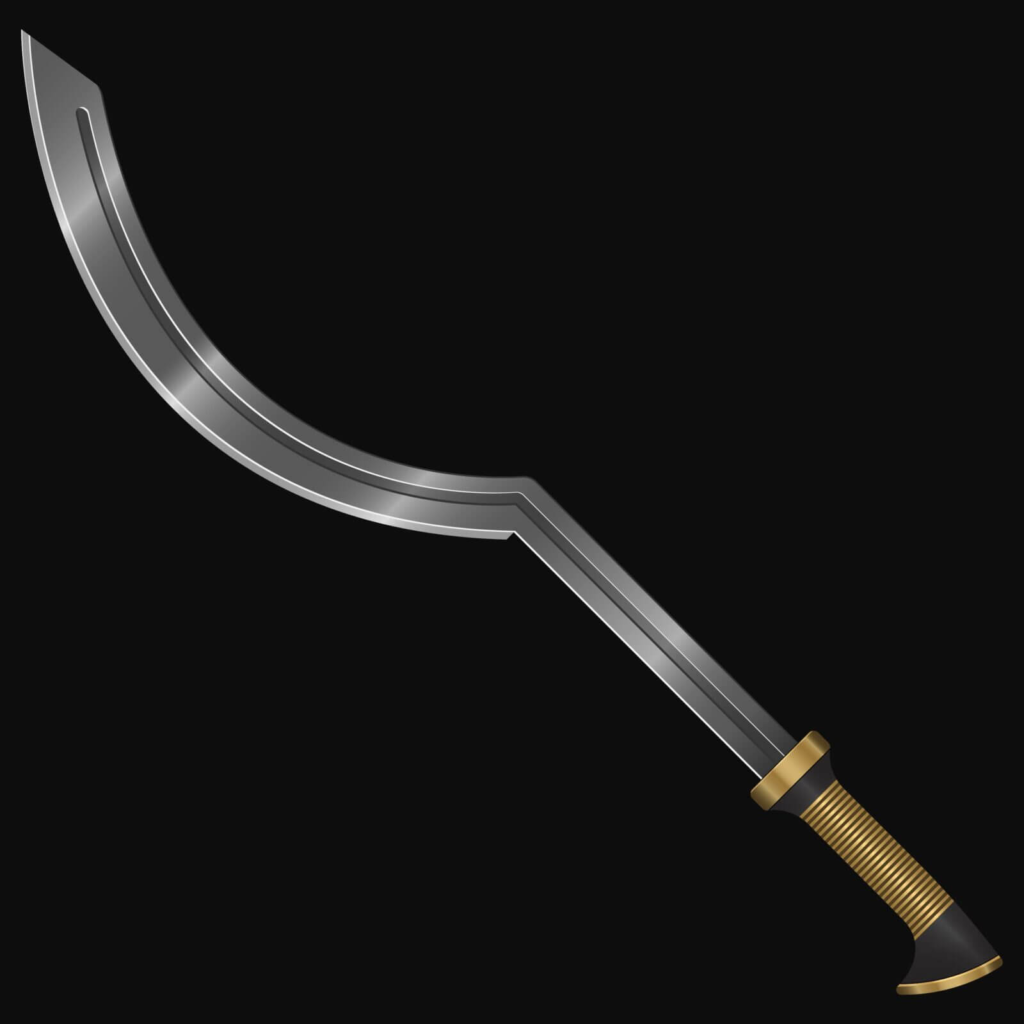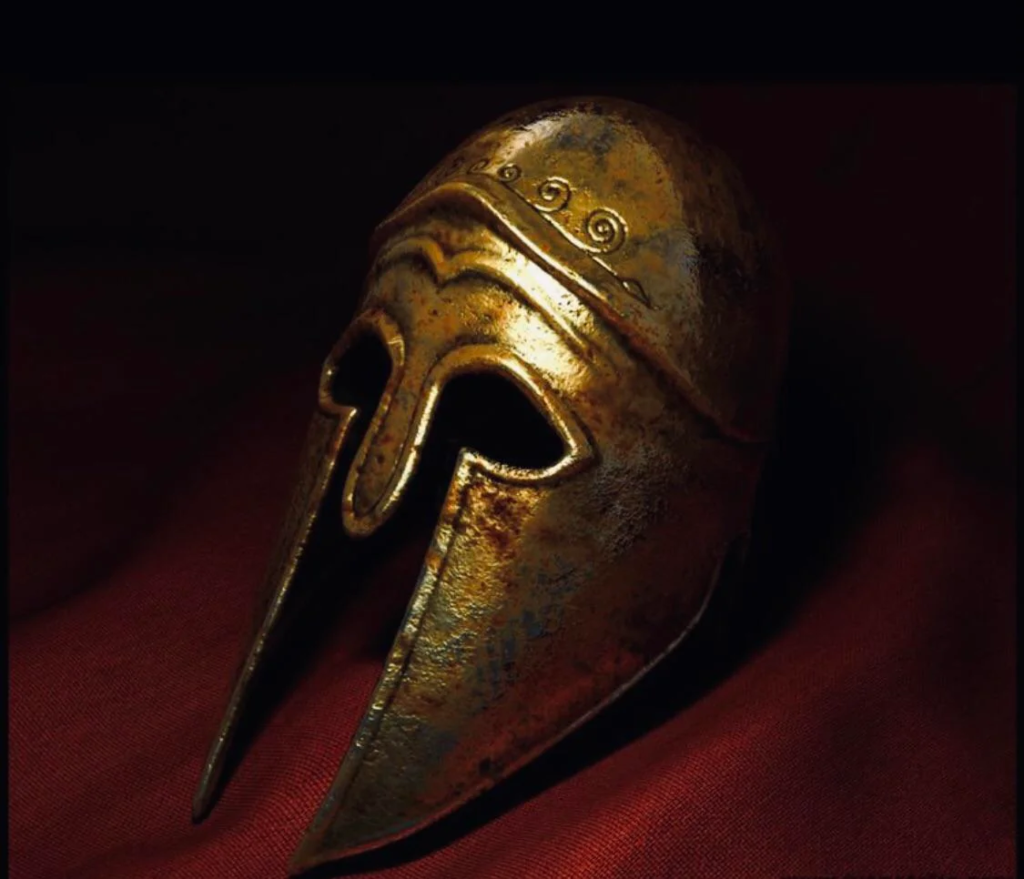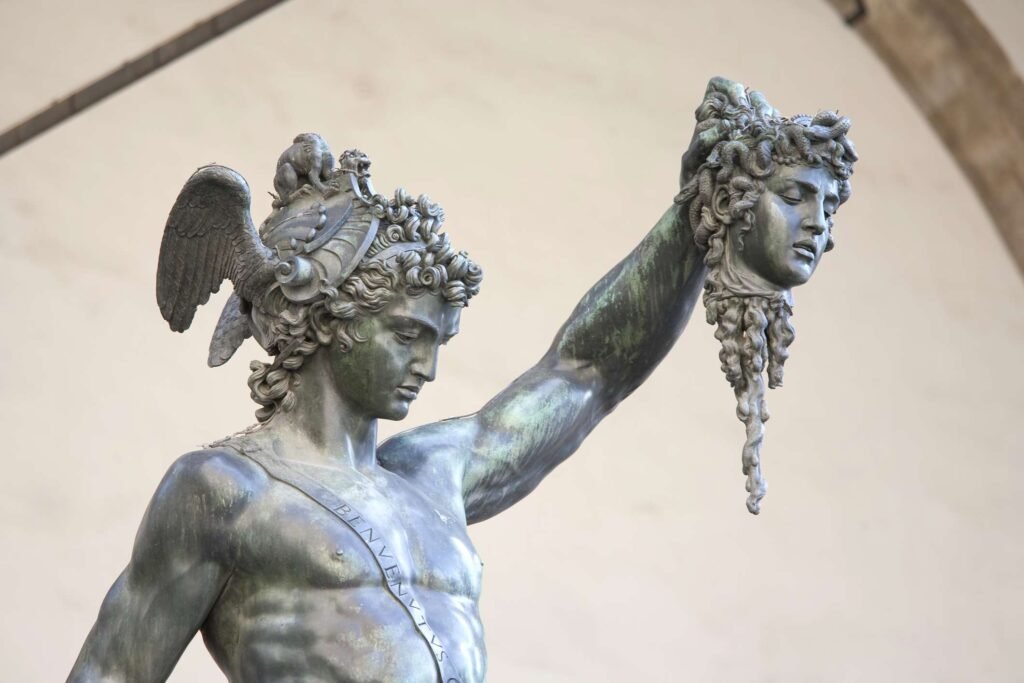The Myth of Perseus
The myth of Perseus is one of the great tales from Greek mythology, filled with adventure, heroism, and intriguing characters. Here’s a summary that aims to be both informative and engaging:
The Myth of Perseus
Perseus was the son of Zeus, the king of the gods, and Danaë, a mortal princess. His story begins with a prophecy that Danaë’s father, King Acrisius of Argos, would be killed by her son. To prevent this, Acrisius locked Danaë in a bronze chamber, but Zeus visited her in the form of a golden shower, and Perseus was conceived.
When Acrisius discovered Perseus, he set mother and son adrift in a chest on the sea, but they were rescued by a fisherman named Dictys on the island of Seriphos. Perseus grew up on Seriphos, and Polydectes, the king of the island, fell in love with Danaë. To rid himself of Perseus, Polydectes sent him on an impossible quest: to bring back the head of Medusa, one of the three Gorgons whose gaze could turn people to stone.

With the help of the gods Athena and Hermes, Perseus received several magical items:
The Mirrored Shield
The mirrored shield given to Perseus by Athena is one of the most iconic elements in his myth. This divine gift played a crucial role in helping him defeat Medusa. Here’s a deeper dive into the shield and its significance:
Purpose: The shield was designed to reflect images like a mirror, allowing Perseus to see Medusa without looking directly at her. Since Medusa’s gaze could turn anyone to stone, this was a vital tool for his survival and success.
Design: Often depicted as a highly polished bronze shield, it was large enough to provide both protection and a clear reflective surface. This design showcased both the ingenuity of the gods and their support for Perseus.
Usage: When Perseus approached the Gorgons’ lair, he used the mirrored shield to navigate and locate Medusa without meeting her deadly gaze. This allowed him to approach and behead her while she was sleeping.

Symbolism
- Wisdom and Strategy: The shield represents the wisdom and strategic thinking of Athena, who was not only the goddess of war but also of wisdom and crafts. By providing Perseus with the shield, she equipped him with the means to outsmart his dangerous foe.
- Divine Aid: The shield is a symbol of the gods’ intervention and favor in human affairs. It highlights the importance of divine support in overcoming seemingly insurmountable challenges.
- Reflection and Introspection: On a metaphorical level, the shield can also be seen as a tool for reflection and introspection, encouraging one to confront dangers and fears indirectly.
The Winged Sandals (Talaria)
The winged sandals, known as “Talaria,” were a remarkable gift from Hermes to Perseus. These sandals had the power to grant their wearer the ability to fly, making them an essential part of Perseus’s journey. Here’s more about these magical items:
Purpose: The primary function of the winged sandals was to allow Perseus to travel swiftly and freely through the air. This ability was crucial for navigating the various challenges and distances he encountered on his quest to defeat Medusa.
Design: The sandals are often depicted as simple leather footwear adorned with small wings, typically at the heels or ankles. The wings symbolize speed and agility, reflecting Hermes’s role as the messenger of the gods.
Usage: With the winged sandals, Perseus could:
- Travel Great Distances: Fly across vast expanses of land and sea, reaching the remote lair of the Gorgons and other distant locations.
- Escape Danger: Swiftly evade threats and enemies, ensuring his survival in perilous situations.
- Rescue Andromeda: Fly to Andromeda’s location and battle the sea monster, showcasing the sandals’ versatility and usefulness in combat.

Symbolism
- Speed and Mobility: The winged sandals represent the incredible speed and mobility that only divine intervention could provide. They highlight the gods’ favor and the extraordinary nature of Perseus’s journey.
- Freedom and Escape: The ability to fly symbolizes freedom and escape from earthly constraints. For Perseus, the sandals offered a way to transcend the limitations of a mortal hero.
- Divine Aid: The sandals, like other gifts from the gods, emphasize the importance of divine support in achieving heroic feats and overcoming impossible odds.
Visual Representation
When visualizing the winged sandals in artwork or storytelling, consider these elements:
- Perseus Taking Flight: An image of Perseus soaring through the sky with the winged sandals, showcasing their power and elegance.
- Close-Up of the Sandals: A detailed depiction of the sandals, highlighting the intricate design and the small, delicate wings.
- Hermes Bestowing the Sandals: A scene where Hermes gifts the winged sandals to Perseus, emphasizing the divine connection and the transfer of power.
The Sickle-like Sword (Harpe)
The sickle-like sword given to Perseus is another crucial element in his myth. This weapon, often referred to as a “harpe” or “adamantine sickle,” was instrumental in his quest to behead Medusa. Here’s a detailed look at this legendary sword:
Purpose: The sword was designed to be both sharp and durable, capable of cutting through the toughest materials. It was specifically chosen to ensure that Perseus could decapitate Medusa with a single, precise stroke.
Design: The sword is often depicted as a short, curved blade resembling a sickle. This unique shape provided an advantage in close combat, allowing for swift and effective slashing motions.
Divine Origin: The harpe was a gift from the gods, particularly Hermes, who wanted to equip Perseus with the best tools for his dangerous mission. Its divine origin signifies the weapon’s extraordinary power and reliability.
Usage: Perseus used the harpe to:
- Behead Medusa: The sword’s sharpness and precision allowed Perseus to swiftly and cleanly decapitate Medusa while she slept.
- Combat Other Foes: The harpe’s versatility made it useful in various other encounters and battles during Perseus’s adventures.

Symbolism
- Strength and Precision: The sword represents the strength and precision needed to accomplish heroic feats. Its unique design symbolizes the combination of power and skill required to overcome formidable challenges.
- Divine Assistance: Like the other gifts from the gods, the harpe emphasizes the importance of divine intervention in achieving success. It highlights the gods’ favor and support for Perseus.
- Heroic Identity: The sword is a key part of Perseus’s identity as a hero. It underscores his role as a champion chosen by the gods to undertake extraordinary tasks.
Visual Representation
When visualizing the sickle-like sword in artwork or storytelling, consider these elements:
- The Beheading of Medusa: An image of Perseus wielding the harpe, about to decapitate Medusa. The scene should capture the tension and precision of the moment.
- Close-Up of the Harpe: A detailed depiction of the sword, highlighting its unique curved design and sharp edge. This can emphasize its craftsmanship and divine origin.
- Hermes Bestowing the Harpe: A scene where Hermes presents the sword to Perseus, showcasing the transfer of divine power and the readiness of the hero.
The Cap of Invisibility (Helm of Darkness)
The cap of invisibility, also known as the “Helm of Darkness” or the “Cap of Hades,” is another fascinating and powerful item given to Perseus to aid in his quest to behead Medusa. Here’s more about this magical artifact:
Purpose: The primary function of the cap was to render its wearer completely invisible. This ability allowed Perseus to move undetected, making it an invaluable tool for his stealthy approach to Medusa’s lair and other dangerous encounters.
Design: The cap is often depicted as a simple yet mystical headpiece, typically a helmet or a cap with a dark or shadowy appearance. Its unassuming design belied its extraordinary power.
Divine Origin: The cap was a gift from the gods, specifically from Hades, the god of the underworld. Hades used the cap to become invisible himself, and its transfer to Perseus symbolized the sharing of divine power to achieve a noble goal.
Usage: With the cap of invisibility, Perseus could:
- Enter the Gorgons’ Lair: Move unseen among Medusa and her sisters, avoiding detection and potential danger.
- Escape Enemies: Evade pursuit by enemies and other threats during his journey.
- Rescue Missions: Carry out daring rescues and interventions without being seen.

Symbolism
- Stealth and Strategy: The cap represents the importance of stealth and strategic thinking in overcoming challenges. It highlights the need for cunning and careful planning in addition to bravery.
- Divine Aid: Like the other gifts, the cap underscores the significance of divine assistance in achieving heroic feats. It signifies the gods’ favor and support for Perseus.
- Power of the Unseen: The cap symbolizes the power of the unseen and the hidden, emphasizing that sometimes the greatest strengths are those that are not immediately visible.
Visual Representation
When visualizing the cap of invisibility in artwork or storytelling, consider these elements:
- Perseus Wearing the Cap: An image of Perseus with the cap on his head, either partially or fully invisible, showcasing the magical effect.
- Close-Up of the Cap: A detailed depiction of the cap itself, highlighting its mystical and shadowy appearance.
- Hades Bestowing the Cap: A scene where Hades presents the cap to Perseus, emphasizing the transfer of divine power and the readiness of the hero.
The cap of invisibility adds an intriguing layer of mystique and strategy to Perseus’s myth, making it a compelling element of his heroic journey
The Magical Bag
The magical bag given to Perseus was an essential item that enabled him to safely transport Medusa’s severed head without the danger of its petrifying gaze affecting him or others. Here’s a closer look at this unique and useful artifact:
Purpose: The primary function of the bag was to contain and carry Medusa’s head securely. This prevented the head’s dangerous power from accidentally turning people to stone during Perseus’s journey.
Design: The bag is often depicted as a durable, enchanted sack, typically made of strong materials like leather or woven fabric. Its magical properties ensured that it could safely contain the head of Medusa without leaking its lethal effects.
Divine Origin: Like the other items given to Perseus, the magical bag was a gift from the gods. It showcased their concern for Perseus’s safety and their support in helping him complete his quest successfully.
Usage: With the magical bag, Perseus could:
- Safely Transport Medusa’s Head: Securely store and carry the head without risking exposure to its deadly gaze.
- Utilize the Head’s Power: When needed, Perseus could take the head out of the bag to use its petrifying power against his enemies.
- Complete His Quest: Return to Seriphos with the head as proof of his success and use it to free his mother from Polydectes’s tyranny.

Symbolism
- Protection and Containment: The bag represents the need to carefully manage and contain dangerous forces. It symbolizes the importance of safeguarding powerful items to prevent unintended harm.
- Divine Assistance: The bag, like the other gifts, emphasizes the role of divine aid in heroic endeavors. It highlights the gods’ thoughtful provision of necessary tools to ensure success.
- Practicality and Preparedness: The bag underscores the importance of being well-prepared and having the right equipment for any challenge. It illustrates the practical side of heroism.
Visual Representation
When visualizing the magical bag in artwork or storytelling, consider these elements:
- Perseus with the Bag: An image of Perseus holding the bag, perhaps with a faint glow or aura indicating its magical properties.
- Close-Up of the Bag: A detailed depiction of the bag itself, highlighting its sturdy design and any decorative or mystical elements that signify its enchantment.
- Storing Medusa’s Head: A scene where Perseus carefully places Medusa’s head into the bag, showcasing the moment of containment and the relief of securing the dangerous item.
Detailed Story Elements
- The Birth of Perseus:
- Prophecy: An oracle predicted that King Acrisius of Argos would be killed by his daughter’s son. To prevent this, Acrisius locked his daughter, Danaë, in a bronze chamber.
- Divine Conception: Zeus visited Danaë in the form of a golden shower, and Perseus was conceived. This miraculous birth often highlights the intervention of gods in human affairs.
- The Journey to Seriphos:
- Cast Adrift: Acrisius placed Danaë and the infant Perseus in a wooden chest and set them adrift on the sea. They were rescued by a kind fisherman named Dictys, who brought them to the island of Seriphos.
- The Quest for Medusa’s Head:
- Polydectes’s Scheme: King Polydectes of Seriphos fell in love with Danaë and saw Perseus as an obstacle. He sent Perseus on a dangerous quest to bring back the head of Medusa, hoping he would never return.
- Divine Assistance: Athena and Hermes guided Perseus, providing him with magical items:
- Mirrored Shield: To see Medusa without looking directly at her.
- Winged Sandals: To fly and move swiftly.
- Cap of Invisibility: To hide from the Gorgons.
- Sickle-like Sword: To behead Medusa.
- Magic Bag: To safely carry Medusa’s head.
- The Gorgons’ Lair:
- Medusa and Her Sisters: Medusa was once a beautiful maiden cursed by Athena, transforming her into a monster with snakes for hair. Her gaze turned people to stone.
- Perseus’s Triumph: Using the mirrored shield to view Medusa indirectly, Perseus beheaded her while she slept. From Medusa’s blood sprang Pegasus, the winged horse, and Chrysaor, a giant.
- The Rescue of Andromeda:
- Chained to a Rock: Andromeda, the daughter of King Cepheus and Queen Cassiopeia, was chained to a rock as a sacrifice to appease a sea monster sent by Poseidon.
- Heroic Rescue: Perseus used Medusa’s head to petrify the sea monster and rescued Andromeda. They fell in love and married.
- Return to Seriphos:
- Polydectes’s Fate: Perseus returned to Seriphos and discovered Polydectes’s mistreatment of Danaë. He used Medusa’s head to turn Polydectes and his followers to stone.
- Restoration of Order: Dictys became the king of Seriphos, and Danaë was freed from her troubles.
- Fulfilling the Prophecy:
- Return to Argos: Perseus eventually returned to Argos. During an athletic contest, he accidentally killed his grandfather Acrisius with a stray discus, fulfilling the oracle’s prophecy.
Key Characters
- Perseus: The hero of the myth, known for his bravery and cleverness.
- Danaë: Perseus’s mother, who faced many hardships but remained resilient.
- Acrisius: The fearful king who tried to avoid his fate.
- Medusa: The cursed Gorgon, whose head became a powerful weapon.
- Andromeda: The princess rescued by Perseus and his eventual wife.
- Polydectes: The scheming king of Seriphos, who met his end through his own plotting.
- Athena and Hermes: The gods who provided crucial aid to Perseus.
Themes and Symbolism
- Fate and Prophecy: The inevitability of fate is a central theme, as seen in Acrisius’s futile efforts to avoid the prophecy.
- Divine Intervention: The gods play a significant role, guiding and aiding Perseus throughout his journey.
- Heroism and Adventure: Perseus’s story embodies the archetypal hero’s journey, filled with challenges, triumphs, and growth.
- Transformation and Redemption: Characters like Medusa and Andromeda undergo significant transformations, highlighting themes of change and redemption.
The myth of Perseus is a rich tapestry of adventure, divine influence, and human emotion, making it a timeless story that continues to captivate audiences.

